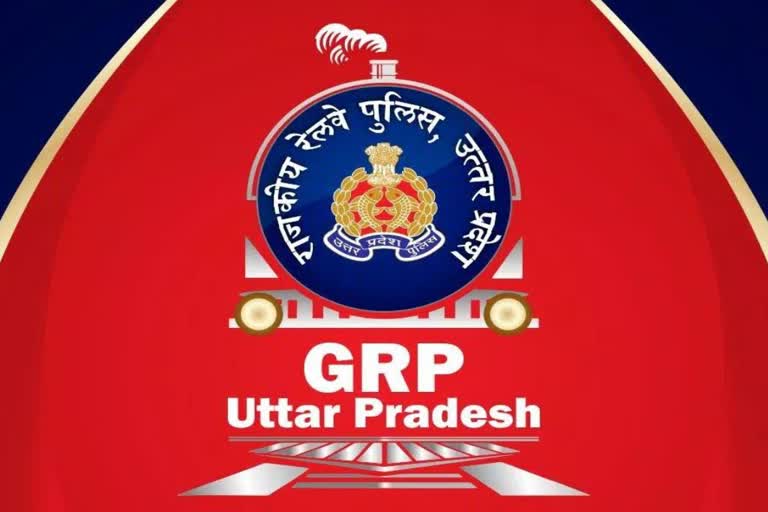The Government Railway Police, often abbreviated as GRP, is a specialized law enforcement agency responsible for ensuring the safety and security of passengers, property, and infrastructure on the railway network within a specific jurisdiction. Operating in various countries, GRP plays a crucial role in maintaining law and order on railways, responding to emergencies, and preventing crimes.
- GRP Full Form: History of Government Railway Police
- GRP Full Form: Jurisdiction and Responsibilities
- GRP Full Form: Duties
- GRP Full Form: Structure and Hierarchy of GRP
- GRP Full Form: Functions
- GRP Full Form: Training
- Overview of GRP Police Salary Structure
- Allowances and Perks for GRP Police Officers
- Salary Comparison with Other Police Departments
- GRP Full Form: GRP salary and promotion
- GRP Full Form: Technology and Modernization
- GRP Full Form: Training and Recruitment
- GRP Full Form: Professional Tax
- GRP Full Form: Provident Fund
- GRP Full Form: Performance-Based Incentives
- GRP Full Form: Conclusion
- GRP Full Form: FAQ about GRP

History of Government Railway Police
The Government Railway Police (GRP) has a rich history closely tied to the development of railways. Here’s a simplified overview:
- 19th Century: Railway policing began in the 19th century when railways were expanding worldwide. Railway companies hire private security or local law enforcement to handle safety and security challenges.
- Late 19th Century: With railways’ continued growth, dedicated railway police units were formed in many countries. In India, the British established the Government Railway Police (GRP) to safeguard the expanding railway infrastructure.
- 20th Century: In the 20th century, railway policing adapted to technological advances and new challenges like terrorism. The GRP was modernized with improved training, communication, and policing techniques.
- Present Day: Today, GRP or equivalent units exist in numerous countries with extensive rail networks. They have diverse roles, including crime prevention, investigations, and ensuring passenger safety. They collaborate with other law enforcement agencies to maintain railway security.
- 21st Century: In the digital age, GRP has embraced technology for surveillance, crime analysis, and communication to address evolving threats on the railways.
Jurisdiction and Responsibilities
Jurisdiction and Responsibilities of Government Railway Police (GRP):
1 ) Jurisdiction: The Government Railway Police (GRP) is responsible for maintaining law and order on railway premises and trains within its designated area. This area typically covers railway stations, tracks, and nearby areas.
2 ) Responsibilities:
- Passenger Safety: GRP ensures the safety and security of passengers during their journey. They help prevent theft, harassment, and other crimes on trains and at stations.
- Emergency Response: In cases of accidents or emergencies on the railway, GRP plays a crucial role in coordinating with other authorities to provide immediate assistance.
- Crime Prevention: GRP patrols railway stations and trains to deter criminal activities such as theft, vandalism, and illegal trading. They work to create a secure environment for travellers.
- Investigations: If a crime occurs on railway property, GRP conducts investigations. They gather evidence, interview witnesses, and collaborate with local police when needed.
- Crowd Control: During peak travel times and special events, GRP manages large crowds to ensure orderly boarding and deboarding of trains, preventing chaos.
- Security: GRP implements security measures to protect railway infrastructure and facilities against potential threats, including terrorism.
- Collaboration: They work closely with other law enforcement agencies and railway authorities to maintain a safe and orderly railway system.
GRP Full Form: Duties
Crime Prevention and Investigation:
The Government Railway Police (GRP) actively works to save you crimes inclusive of robbery, robbery, pickpocketing, vandalism, and smuggling on railway premises. Officers are also liable for investigating crook offenses said at stations or taking place onboard trains, ensuring proper submitting of First Information Reports (FIRs), amassing proof, and coordinating with nearby police while essential.
Passenger Safety and Protection:
A primary duty of the GRP is to make certain the safety of all passengers, with precise attention to inclined corporations including women, youngsters, the aged, and humans with disabilities. The GRP takes preventive measures to reduce incidents of harassment, attack, and theft. Special consciousness is given to women’s protection through deploying girl officers and supplying helplines for emergency assistance.
Patrolling and Surveillance:
GRP officers conduct everyday patrolling on platforms, internal trains, and alongside railway tracks to discover suspicious sports and deter criminal behavior. Surveillance is better with the help of CCTV cameras and other monitoring equipment set up at stations. Special patrols are deployed all through festive seasons, vacations, or while trains are overcrowded to save you crimes and maintain order.
Handling Train Accidents and Emergencies:
The GRP plays a important position in rescue operations all through train accidents, derailments, or herbal disasters affecting railways. Officers help passengers in misery, coordinate with rescue groups, and facilitate medical useful resource. Additionally, they maintain order at some point of evacuations and help restore ordinary operations by dealing with crowds and minimizing panic at coincidence sites.
GRP Full Form: Structure and Hierarchy of GRP
| Rank | Role and Responsibilities | Reporting Authority |
|---|---|---|
| Director General of Police (DGP) | Oversees the entire state police, including GRP operations at the state level. Ensures policy implementation and coordination with state government and railways. | State Government / Home Department |
| Additional Director General of Police (ADGP) – Railways | Manages and monitors the overall functioning of the GRP within the state. Guides superintendents and formulates crime control strategies specific to railways. | Director General of Police (DGP) |
| Inspector General of Police (IG) – Railways | Supervises multiple divisions within a railway zone, ensuring that all operational guidelines and security measures are followed. Conducts inspections and reviews. | Additional Director General of Police (ADGP) |
| Deputy Inspector General of Police (DIG) – Railways | Assists the IG by managing a group of divisions and ensuring efficient coordination between GRP units across districts. | Inspector General of Police (IG) |
| Superintendent of Police (SP) – Railways | Heads a railway division or district, responsible for day-to-day management and law enforcement activities. Oversees crime investigation, accident management, and staff supervision. | Deputy Inspector General of Police (DIG) |
| Deputy Superintendent of Police (DSP) / Circle Officer (CO) | In charge of a specific jurisdiction or group of railway stations. Manages station-level crime investigations and ensures patrolling operations are effective. | Superintendent of Police (SP) |
| Inspector of Police | Oversees individual railway stations, trains, and small clusters of stations. Directs Sub-Inspectors and constables in crime investigation and law enforcement. | Deputy Superintendent of Police (DSP) |
| Sub-Inspector (SI) | Responsible for routine patrolling, crime detection, and preliminary investigations. Supervises constables and prepares reports for inspectors. | Inspector of Police |
| Assistant Sub-Inspector (ASI) | Assists Sub-Inspectors with patrolling, investigation, and maintaining law and order. Often stationed at smaller stations or outposts. | Sub-Inspector (SI) |
| Head Constable | Manages teams of constables and assists in crime prevention efforts. Maintains duty rosters and ensures discipline among lower-rank officers. | Assistant Sub-Inspector (ASI) |
| Constable | Forms the backbone of GRP, responsible for patrolling platforms, trains, and tracks. Assists passengers, prevents petty crimes, and responds to emergencies. | Head Constable / Sub-Inspector |
GRP Full Form: Functions
Crime Prevention and Investigation:
The GRP focuses on stopping crimes including theft, robbery, human trafficking, and vandalism on railway assets. It also investigates criminal cases pronounced on trains and structures, ensuring proper felony lawsuits.
Ensuring Passenger Safety:
A essential characteristic of GRP is to shield passengers from threats like harassment, pickpocketing, assault, and different types of misconduct. Special attention is given to the protection of women, youngsters, and aged passengers.
Patrolling and Surveillance:
GRP personnel behavior everyday patrols on structures, interior trains, and along railway tracks. They additionally use surveillance tools which include CCTV cameras and different monitoring structures to discourage unlawful activities.
Handling Train Accidents and Emergencies:
The GRP plays a essential function in dealing with injuries, derailments, or emergencies on trains. It assists in rescue operations, controls crowds, guarantees clinical help, and facilitates restore normalcy after incidents.
Maintaining Law and Order:
GRP is liable for ensuring peace on railway premises through stopping public disturbances, handling crowd manage at some stage in fairs or protests, and addressing disputes between passengers.
Collaboration with Agencies:
To steady railway operations, the GRP works intently with the Railway Protection Force (RPF), local police, intelligence businesses, and railway officials to coordinate efforts for crime prevention and passenger protection.
Training
1. Induction Training
- Orientation about GRP roles and responsibilities.
- Introduction to railway operations and infrastructure.
2. Physical Training
- Focus on fitness, endurance, and agility.
- Drills and exercises to meet the physical demands of the job.
3. Law and Order Management
- Training on crowd control during peak travel seasons and emergencies.
- Managing protests, strikes, and unruly passengers in railway premises.
4. Criminal Law and Investigation
- Understanding laws related to railways (Railway Act, Indian Penal Code).
- Techniques for investigating crimes like theft, smuggling, and vandalism in trains or railway property.
5. Weapon Handling and Self-defense
- Training on the use of firearms and other defense tools.
- Self-defense techniques for personal safety during critical situations.
6. Communication and Coordination Skills
- Training on using communication tools like wireless systems.
- Coordination with other police units and railway authorities.
7. Cybercrime and Technology
- Awareness of cyber threats targeting railway operations.
- Skills to detect and handle cybercrime incidents related to railways.
8. Emergency and Disaster Management
- Response to accidents, derailments, and natural disasters.
- Evacuation drills and first-aid training for passenger safety.
9. Psychological and Stress Management
- Techniques to handle work stress and high-pressure situations.
- Counseling sessions to improve mental resilience.
10. Practical Field Training
- On-the-job training at railway stations and onboard trains.
- Handling real-life scenarios to apply learned skills effectively.
Overview of GRP Police Salary Structure
| Component | Details |
|---|---|
| Basic Pay | Varies by rank: – Constable: ₹21,700 – ₹69,100 (Level 3) – Sub-Inspector (SI): ₹35,400 – ₹1,12,400 (Level 6) – Inspector: ₹44,900 – ₹1,42,400 (Level 7) |
| Dearness Allowance (DA) | 38% of the basic pay (subject to revision). |
| House Rent Allowance (HRA) | 8% – 24% of basic pay, depending on the posting location (urban, semi-urban, or rural). |
| Travel Allowance (TA) | Fixed as per government norms. |
| Special Duty Allowance | Additional compensation for hazardous or special assignments. |
| Gross Salary | Includes basic pay and allowances: – Constable: ₹30,000 – ₹40,000 – Sub-Inspector: ₹45,000 – ₹60,000 – Inspector: ₹55,000 – ₹70,000 |
| Deductions | – Provident Fund (12% of basic pay) – Professional Tax – Group Insurance – Income Tax (as per slab). |
| In-Hand Salary | After deductions: – Constable: ₹25,000 – ₹35,000 – Sub-Inspector: ₹40,000 – ₹50,000 – Inspector: ₹50,000 – ₹60,000 |
| Perks and Benefits | – Free/discounted railway travel passes – Health coverage for personnel and families – Retirement benefits (pension, gratuity, PF). |
| Promotion and Increment | Regular increments based on service duration and performance. |
| 7th Pay Commission Impact | Revised salaries, increased allowances, and better benefits. |
| Work Environment | Varies based on duty location and assignments. |
Allowances and Perks for GRP Police Officers
- Dearness Allowance (DA): A constant percent of simple pay (presently 38%) to counter inflation.
- House Rent Allowance (HRA): 8% to 24% of simple pay, relying at the location (urban, semi-urban, rural).
- Travel Allowance (TA): Covers tour fees and consists of unfastened or discounted teach tour passes.
- Special Duty Allowance: Additional pay for dangerous or difficult assignments.
- Medical Benefits: Free or sponsored healthcare for officials and their families.
- Uniform Allowance: Financial help for getting and retaining uniforms.
- Pension and Retirement Benefits: Includes a pension, gratuity, and provident fund for post-retirement security.
- Education Allowance: Financial aid for the training of officials` children.
- Subsidized Canteen Services: Access to important items at decrease expenses in police canteens.
- Free or Subsidized Housing: Government quarters for officials, in particular in primary towns and towns.
Salary Comparison with Other Police Departments
1. GRP Police vs. State Police
| Rank | GRP Police Salary | State Police Salary |
|---|---|---|
| Constable | ₹21,700 – ₹69,100 | ₹21,700 – ₹69,100 |
| Sub-Inspector (SI) | ₹35,400 – ₹1,12,400 | ₹35,400 – ₹1,12,400 |
| Inspector | ₹44,900 – ₹1,42,400 | ₹44,900 – ₹1,42,400 |
- Similarities: Both GRP Police and State Police offer similar pay scales for constables, sub-inspectors, and inspectors.
- State Police: Some state police departments may offer higher allowances or incentives depending on the region.
2. GRP Police vs. Central Armed Police Forces (CAPF)
| Rank | GRP Police Salary | CAPF Salary |
|---|---|---|
| Constable | ₹21,700 – ₹69,100 | ₹21,700 – ₹69,100 |
| Sub-Inspector (SI) | ₹35,400 – ₹1,12,400 | ₹35,400 – ₹1,12,400 |
| Inspector | ₹44,900 – ₹1,42,400 | ₹47,600 – ₹1,51,000 |
- CAPF: Central forces like CRPF, BSF, and ITBP may offer slightly higher salaries at the Inspector level, but the allowances are comparable.
- GRP: GRP Police generally offer specific allowances for railway-related duties.
3. GRP Police vs. Delhi Police
| Rank | GRP Police Salary | Delhi Police Salary |
|---|---|---|
| Constable | ₹21,700 – ₹69,100 | ₹21,700 – ₹69,100 |
| Sub-Inspector (SI) | ₹35,400 – ₹1,12,400 | ₹35,400 – ₹1,12,400 |
| Inspector | ₹44,900 – ₹1,42,400 | ₹47,600 – ₹1,51,000 |
- Delhi Police: The salary at higher levels (Inspector) is slightly higher due to the added cost of living allowances in the capital.
- GRP: Similar pay scales but with different allowances specific to the railway context.
4. GRP Police vs. Armed Police (State)
| Rank | GRP Police Salary | Armed Police Salary |
|---|---|---|
| Constable | ₹21,700 – ₹69,100 | ₹21,700 – ₹69,100 |
| Sub-Inspector (SI) | ₹35,400 – ₹1,12,400 | ₹35,400 – ₹1,12,400 |
| Inspector | ₹44,900 – ₹1,42,400 | ₹44,900 – ₹1,42,400 |
- Armed Police: Comparable salary structure with GRP, but certain state armed police departments may provide more benefits for personnel serving in high-risk areas.
GRP salary and promotion
Salary:
- Entry-Level Positions: New recruits in the GRP usually start with a basic salary, which varies based on factors such as their educational qualifications and the region they are posted in. This salary is often supplemented by various allowances, such as housing, transport, and medical allowances.
- Promotion-Based Increases: As GRP officers gain experience and move up in rank or position, their salaries generally increase. Promotions come with higher pay scales and additional benefits.
- Specialized Units: Some GRP officers may receive additional pay or allowances if they are part of specialized units or have specific skills or training.
- Overtime and Bonuses: GRP officers may also receive overtime pay for extra hours worked, as well as performance-based bonuses and incentives.
Promotions:
- Rank-Based Promotions: In most law enforcement agencies, including GRP, promotions are based on an officer’s rank or position. Typically, officers start at the entry level and can advance through the ranks over the course of their careers.
- Qualifications and Performance: Promotions often depend on an officer’s qualifications, performance evaluations, and years of service. Officers who excel in their duties and undergo relevant training may be considered for higher positions.
- Competitive Exams: In some cases, promotions may be subject to passing competitive exams or assessments that test an officer’s knowledge and skills.
- Vacancies and Seniority: The availability of positions at higher ranks and an officer’s seniority within the force can also influence promotions.
- Clearance of Background Checks: Promotion may also depend on an officer’s conduct and the results of background checks.
Technology and Modernization
- Technology and modernization have completely transformed our lives, influencing how we communicate, work, and engage with the world. In this era dominated by digital advancements, technology stands as the primary driver of progress.
- It has not only made information readily available but has also connected people worldwide, sparking significant changes across various industries. From smartphones that double as personal assistants to cutting-edge medical devices that save lives, technology has seamlessly integrated into our daily routines. Furthermore, businesses and sectors have embraced automation, artificial intelligence, and data analysis to boost productivity and efficiency.
Training and Recruitment
Training and recruitment are integral components of any organization’s growth and success.
Recruitment is the process of finding, attracting and selecting qualified candidates to fill vacancies in an organization. This includes creating job descriptions, posting job postings, conducting interviews, assessing candidate qualifications and testing roles and company culture. Effective recruitment ensures that an organization has a pool of talented individuals to choose from, thereby increasing its overall potential.
Training is a way of developing employees’ knowledge, skills and skills to perform their roles effectively. Training can take a variety of forms, including on-the-job training, workshops, e-learning and seminars. It gives employees the tools they need to be effective in their current positions and helps them prepare for future responsibilities. A well-structured training program can boost morale, improve job satisfaction, and increase employee retention.
Professional Tax (GRP Full Form)
Applicability of Professional Tax
Professional Tax is a country-stage tax levied on salaried individuals, consisting of Group (GRP) Police Officers. The tax costs and slabs range from country to country, usually relying at the employee`s earnings stage. For instance, in lots of states, the most expert tax deduction is ₹2,500 annually. This tax is deducted month-to-month from the officer`s revenue with the aid of using the corporation and is relevant to all GRP officers, no matter rank or experience.
Impact on Take-Home Salary
Professional tax, at the same time as fairly small, does lessen the internet take-domestic revenue of GRP officers. The deduction quantity varies primarily based totally at the revenue bracket, with higher-earnings earners paying more. This obligatory deduction is a part of the same old payroll method and barely decreases the general earnings obtained every month, which may be an crucial attention for monetary making plans and budgeting.
Provident Fund (GRP Full Form)
Employee and Employer Contributions to PF
For Group (GRP) Police Officers, the Provident Fund (PF) is a critical element in their income package. Both the worker and the corporation make a contribution 12% of the officer`s fundamental income every month to the PF account. The corporation`s contribution is split among the Employee Provident Fund and the Employee Pension Scheme (EPS), at the same time as the worker`s contribution completely is going to the PF.
Importance of PF in Retirement Planning
The Provident Fund serves as a long-time period financial savings mechanism, making sure that GRP officials have a huge corpus upon retirement. Over the years, the collected quantity, which incorporates contributions and interest, presents monetary safety after retirement. Additionally, the PF quantity is normally tax-exempt, making it an green and critical a part of retirement planning, assisting officials to hold their way of life post-retirement.
Performance-Based Incentives (GRP Full Form)
Structure of Performance Bonuses
Performance-Based Incentives for GRP Police Officers are designed to praise notable provider and achievements of their roles. These incentives are commonly dependent as bonuses which can be both constant or variable, relying at the officer`s rank and the precise achievements. Bonuses is probably offered yearly or upon final touch of sizeable obligations or operations that make a contribution to public protection or a hit case resolutions.
Criteria for Earning Incentives in GRP
To qualify for overall performance-primarily based totally incentives, GRP officials need to meet precise overall performance standards, which may also encompass correctly finishing high-profile cases, demonstrating leadership, or attaining departmental goals. These standards are aligned with broader police overall performance requirements and might encompass commendations from superiors or awards for bravery. Earning those incentives now no longer best boosts profits however additionally complements an officer’s recognition and profession possibilities inside the police force.
Conclusion
In conclusion, the Government Railway Police (GRP) plays a vital role in ensuring the safety, security, and orderliness of railway networks within their jurisdiction. With a history dating back to the expansion of railways in the 19th century, the GRP has adapted to evolving challenges, including terrorism, modern technology, and the needs of passengers and cargo transportation.
GRP officers are responsible for maintaining law and order on railway premises and trains. Their duties include crime prevention, investigations, emergency response, and crowd management during peak travel times. They collaborate with other law enforcement agencies and railway authorities to maintain security.
FAQs About GRP
Q1: What is the primary role of GRP?
GRP maintains law and order on railway premises, investigates crimes, and ensures passenger safety on trains and platforms.
Q2: How is GRP different from RPF?
GRP handles law enforcement and crime investigation, while the Railway Protection Force (RPF) focuses on protecting railway property and ensuring passenger security.
Q3: Who controls the GRP?
GRP operates under the state police departments, with oversight from the state government.
Q4: What types of crimes does GRP investigate?
GRP investigates thefts, robberies, harassment, trafficking, vandalism, and other criminal activities occurring on railway premises.
Q5: How can passengers contact GRP during an emergency?
Passengers can use emergency helplines (like 182) or approach GRP personnel at railway stations and onboard trains.
Q6. Which is better, GRP or RPF?
Both GRP and RPF serve railway safety, but RPF has a broader role in railway security and law enforcement.
Q7. What is the salary of RPF?
RPF Constables earn ₹21,700 to ₹69,100, while officers may earn up to ₹1,12,400 or more.
Q8. What is the salary of GRP Constable?
The salary of a GRP Constable ranges from ₹21,700 to ₹69,100, depending on the state and allowances.
Q9. What is the work of GRP police?
GRP ensures security, manages crime prevention, handles passenger safety, and investigates railway-related offenses and accidents.
Q10. What is the rank of 2-star police in India?
In India, a 2-star rank typically corresponds to the Assistant Superintendent of Police (ASP) or equivalent in certain forces.



















